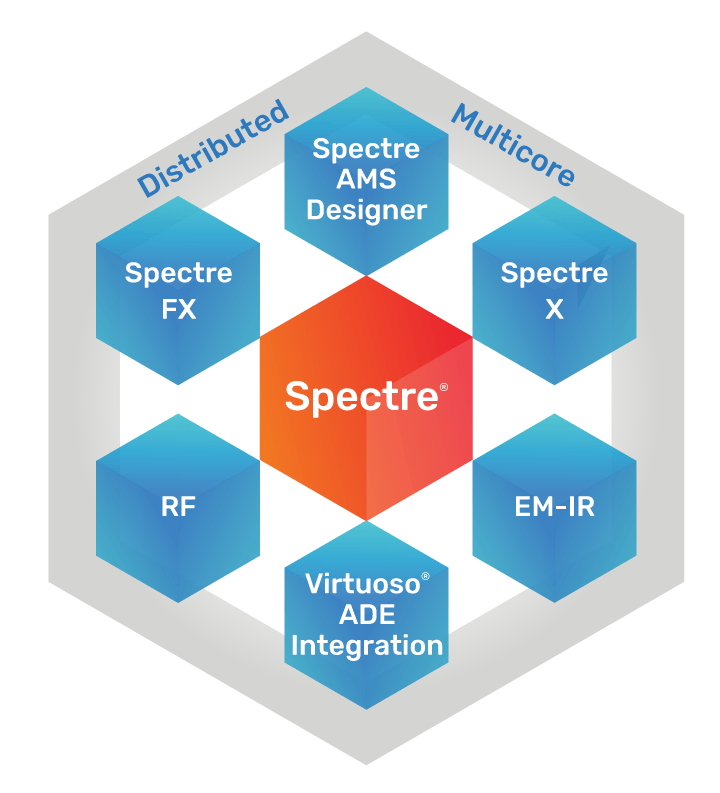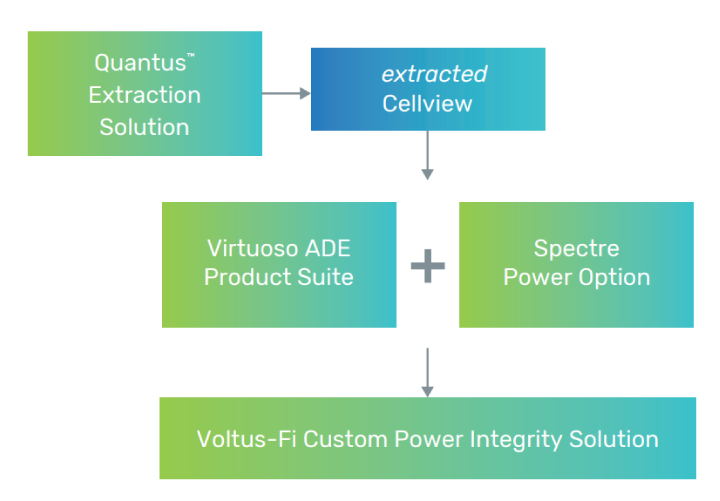Datasheet
Spectre Extensive Partitioning Simulator (XPS)
FastSPICE high-performance and capacity simulation needed to handle memory and mixed-signal designs
The Cadence Spectre Extensive Partitioning Simulator (XPS) is a high-performance transistor-level FastSPICE circuit simulator for pre- and post-layout verification of memories, custom digital, and analog/mixed-signal SoC designs. It delivers the capacity, accuracy, and speed required for verification of modern complex and tightly coupled full-chip designs. It uses advanced proprietary partitioning techniques to deliver unparalleled performance compared to traditional FastSPICE simulators, delivering the needed throughput for design and verification of the complex full-chip designs.
Overview
Spectre Simulation Platform
As the industry’s leading solution for balancing high-performance and capacity needs with analog accuracy, the Cadence Spectre Simulation Platform encompasses multiple solvers that allow a designer to move easily and seamlessly between circuit-, block-, and system-level simulation and verification tasks. The foundation of the platform is a unified set of technologies shared by all of the simulators—the parser, device models, Verilog-A behavioral modeling, input data formats, output data formats, etc.—thereby guaranteeing consistent and accurate evaluation methods regardless of the simulator selected. In addition to the individual solvers, the Spectre simulation technology is well integrated into other Cadence technology platforms, including Xcelium Logic Simulation, Liberate Trio Characterization Suite, Legato Reliability Solution, Virtuoso ADE Product Suite, Voltus-Fi Custom Power Integrity Solution, and the Virtuoso RF Solution, to provide the industry’s most comprehensive cross-domain simulation solution.
Spectre Extensive Partitioning Simulator (XPS)
Features
Advanced partition technology results industryleading runtime performance
The advanced partition technology in Spectre XPS allows the netlist to be partitioned to a small number of devices. Different partitions can be simulated together based on the coupling effects and each partition can be simulated at multi-rate to ensure accurate and fast results. Once the user specifies the memory type, Spectre XPS utilizes a unique and automatic partition for mixed-signal designs to ensure that the analog components get the SPICE accuracy while the digital components get the speed.
Automatic partition provides analog accuracy and digital performance
Spectre XPS provides mixed-signal support. After the netlist is read in, it is automatically partitioned into analog and digital. The high-precision analog components are run with Spectre APS, and the digital components are run with Spectre XPS. Advanced island-based analog multi-rate technology is applied to ensure that you get the best performance without compromising accuracy.
Integrated EM-IR solution
Spectre EM-IR uses a voltage-based two-stage iterated method to increase throughput and capacity with good accuracy. It avoids the need to store a huge current database by running a fast voltage-only simulation with RC reduction in the first stage. It accurately calculates tap currents and RC effects on voltage in the second stage with multiprocessor support. Furthermore, it treats the powergating transistor as-is without approximation, which leads to an accurate EM-IR ramp-up analysis. Spectre EM-IR is fully integrated with the Virtuoso ADE Product Suite and the analysis results can be post-processed with the Voltus-Fi Custom Power Integrity Solution (Figure 2).


